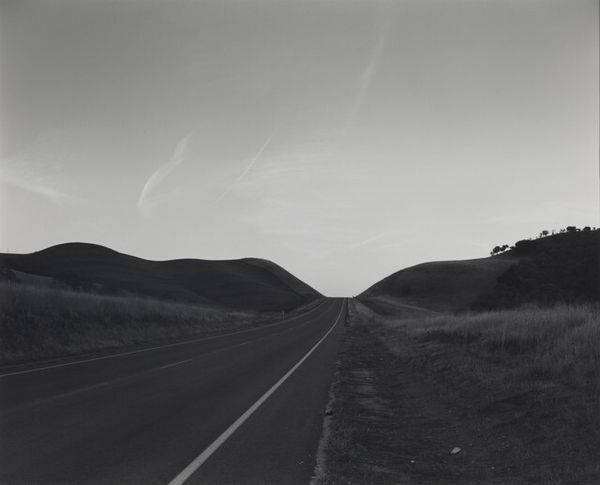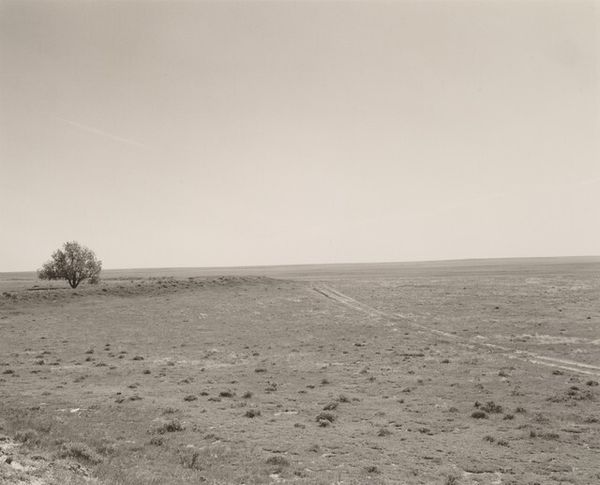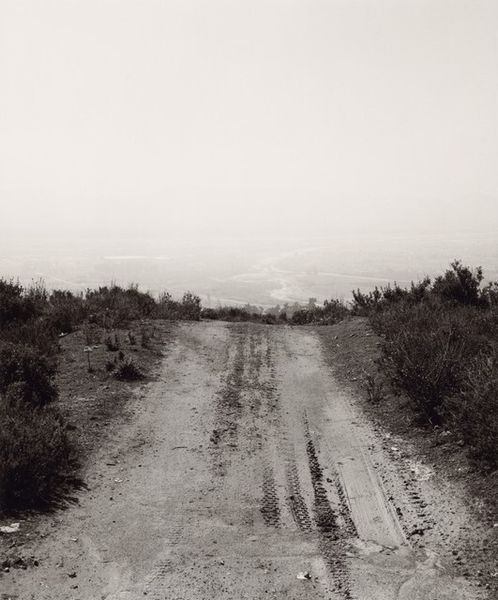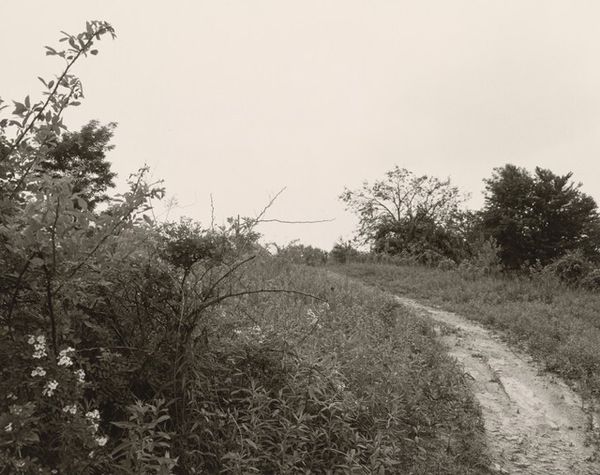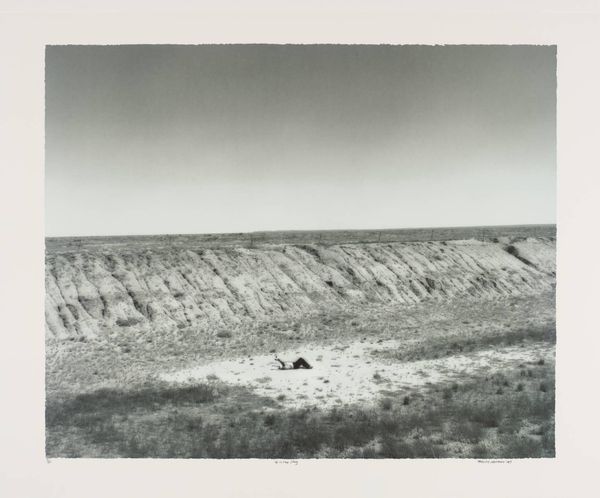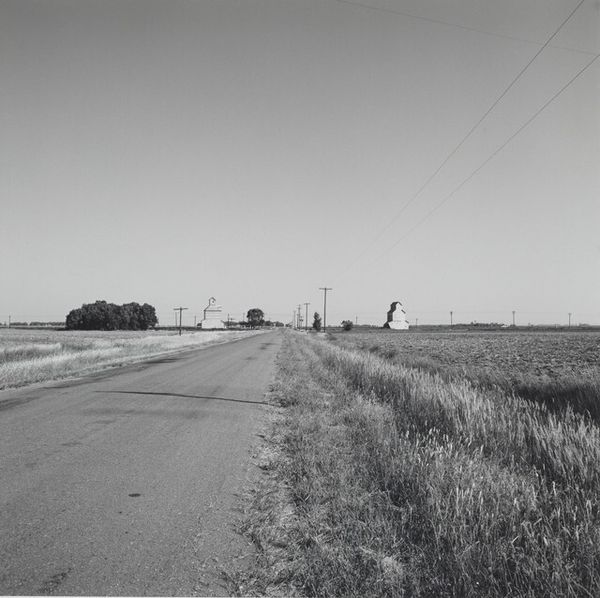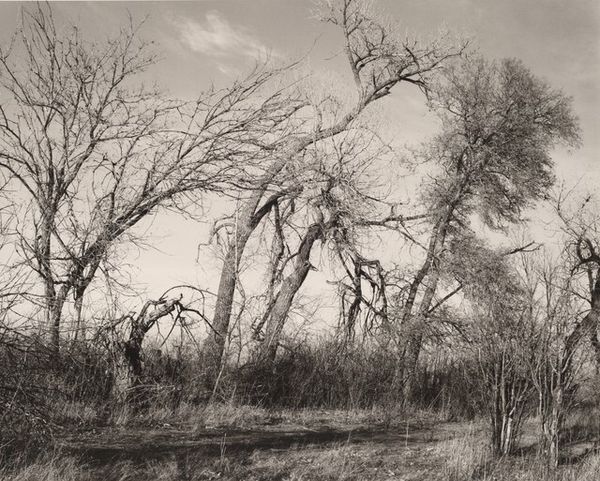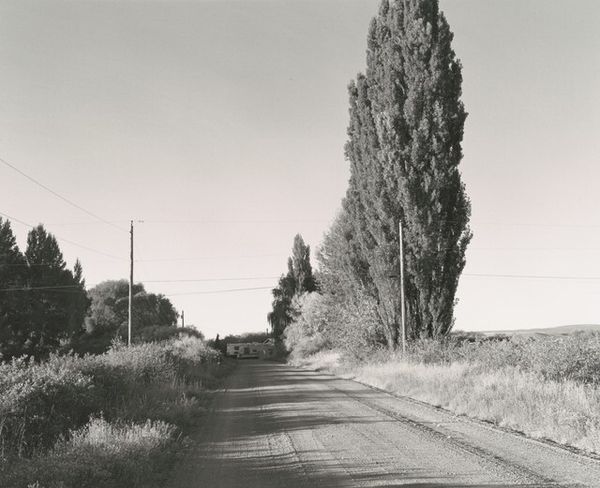
A dying farm community, edge of Briggsdale, Colorado Possibly 1983 - 1990
0:00
0:00
photography, gelatin-silver-print
#
cloudy
#
contemporary
#
black and white photography
#
snowscape
#
countryside
#
landscape
#
photography
#
outdoor scenery
#
low atmospheric-weather contrast
#
gelatin-silver-print
#
monochrome photography
#
monochrome
#
skyscape
#
realism
#
monochrome
#
shadow overcast
Dimensions: image: 38.3 × 47 cm (15 1/16 × 18 1/2 in.) sheet: 40.5 × 50.4 cm (15 15/16 × 19 13/16 in.)
Copyright: National Gallery of Art: CC0 1.0
Editor: So, this photograph, “A dying farm community, edge of Briggsdale, Colorado” by Robert Adams, was likely taken sometime in the 80s and rendered as a gelatin-silver print. There’s a stark, desolate feeling about it. The bleak landscape just seems to stretch on forever. What’s your take on it? Curator: Adams' work, particularly this image, is potent. He focused on the evolving American West and the effects of human intervention on the natural landscape. The social context here is key: think about the agricultural crises of the 1980s. Does this image make you consider land usage, economic shifts, and the displacement of rural communities? Editor: I hadn't really considered the economic factors directly, but now that you mention it, it makes the image all the more poignant. I was more focused on the purely visual aspects - the receding lines of the dirt road, and the oppressive sky. Curator: Exactly! And that "oppressive sky" contributes to the mood, doesn’t it? Consider also the fence line, a subtle visual barrier. How might that represent divisions and the privatization of land? Adams encourages us to question who benefits and who is marginalized by these changes. Editor: I see what you mean. The fence is almost like a silent boundary, reinforcing the isolation. It really reframes the image as a critique rather than just a depiction of a landscape. Curator: Precisely. And, in what ways does it challenge conventional landscape photography, which often romanticizes the American West? This image resists that ideal. Editor: I guess I was expecting to see something pretty or grand. But this is about the opposite of that – about the harsh realities. Curator: Yes, and by looking at art through a social lens, we can challenge dominant narratives and question the structures that shape our world. It is never really just about "what we see". Editor: Definitely! It's like the photograph becomes a conversation starter. I'll definitely remember this broader perspective. Curator: Glad to hear that! Seeing beyond the aesthetic unlocks the work’s full power.
Comments
No comments
Be the first to comment and join the conversation on the ultimate creative platform.


